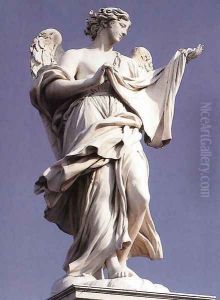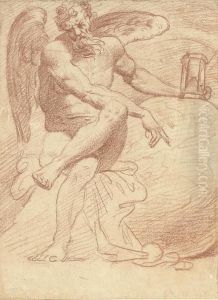Cosimo Fancelli Paintings
Cosimo Fancelli was an influential Italian sculptor of the Baroque period, born in 1620 in Rome, Italy. He hailed from a family deeply entrenched in the arts; his father, Pietro Paolo Fancelli, was a noted sculptor as well, ensuring that Cosimo was immersed in the world of sculpture from a young age. Despite the shadow of his father's reputation, Cosimo managed to carve out his own distinct path in the art world, making significant contributions to Baroque sculpture. His works are characterized by their dynamic movement, intricate details, and emotional depth, which were hallmarks of the Baroque style that sought to evoke emotion and express the grandeur of the Catholic Church during the Counter-Reformation.
Fancelli's career was significantly bolstered by his association with Gian Lorenzo Bernini, one of the most prominent sculptors and architects of the time. Although specific details of their collaboration are not extensively documented, it is known that Fancelli worked under Bernini's direction on several important projects. This association allowed him to contribute to some of the most prestigious commissions of the 17th century in Rome, including works at St. Peter's Basilica and other significant ecclesiastical and public buildings.
Among Fancelli's notable works is his contribution to the Chair of Saint Peter (Cathedra Petri) in St. Peter's Basilica, a monumental relic enshrined in a grandiose bronze housing designed by Bernini. Fancelli's contributions to this project exemplify his skill in sculpting figures that communicate intense spiritual experiences and devotion, qualities that made his work highly sought after for religious commissions. Additionally, his sculptures adorned several Roman churches and public spaces, contributing to the aesthetic that defines the Baroque period in Rome.
Cosimo Fancelli's legacy is marked by his ability to blend technical skill with emotional expression, capturing the essence of the Baroque period's dramatic intensity. Despite his death in 1688, his works continue to be admired for their artistic merit and contribution to the development of Baroque sculpture in Italy. Fancelli's influence extended beyond his lifetime, with his style and approach to sculpture informing generations of artists who followed in the Baroque tradition.

